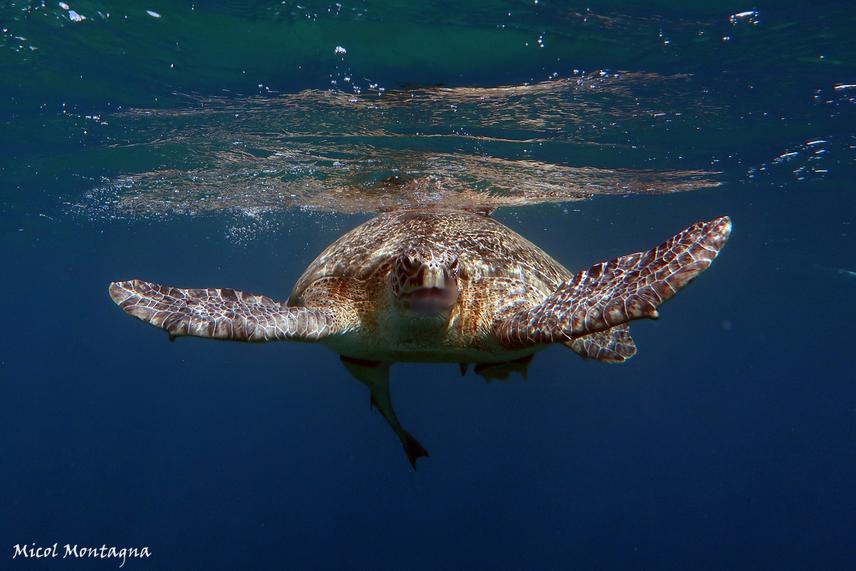Micol Montagna
Other projects
27 Jan 2021
Marine Turtle Conservation During a Pandemic: Promoting Online Citizen Science Training and Best Practices to Protect Endangered Marine Species
Our main goal is to provide detailed information on marine turtles (Chelonia mydas and Eretmochelys imbricata) in the Egyptian Red Sea (specifically on their distribution, abundance, population structure, seasonal migrations, habitat use) in order to improve the conservation status of those threatened species.
We also aim at supporting conservation by spreading awareness among users and community members on the importance of marine turtles for a healthy environment and the threats they face during their life.

There are five species of marine turtles in the Egyptian Red Sea but only the green and hawksbill turtles are frequently observed. Both species are known to nest and feed in the Egyptian Red Sea. Nesting grounds are generally located on islands where access is extremely limited. Feeding grounds are generally located in shallow coastal areas that are usually heavily used by people for recreational activities like snorkelling and diving.
The presence of increasing number of people in important marine turtle’s developmental and feeding areas is a known source of disturbance, especially when there is no code of conduct in place and little to no enforcement. We know that prolonged disturbance of marine animals can have serious consequences on the species well-being (e.g. by reducing the time animals are feeding or by increasing their energy consumption due to constant attempts to ‘escape’ from people). One way to reduce the impact of such a threat is by educating tourists and visitors and share with them best practices.
With this project, conducted under the umbrella of the Hurghada Environmental Protection and Conservation Association (HEPCA), in partnership with Boomerang for Earth Conservation (BEC), the Danish Zoological Society (DZS) and supported by the European Scuba Agency (ESA), we aim at collecting data on green and hawksbill turtles distribution and habitat use so that to map and highlight important areas for marine turtles in the region. This information will be used to propose areas of important conservation value to the Egyptian Ministry of Environment.
We also aim to work with dive centers and engage divers and snorkelers in data collection, while also promoting best practices when swimming and diving with turtles. Finally, we are hoping to work with local schools and inspire new generations of Egyptian children through the organization of periodical awareness events on threats faced by marine turtles and their role in keeping healthy ecosystems.